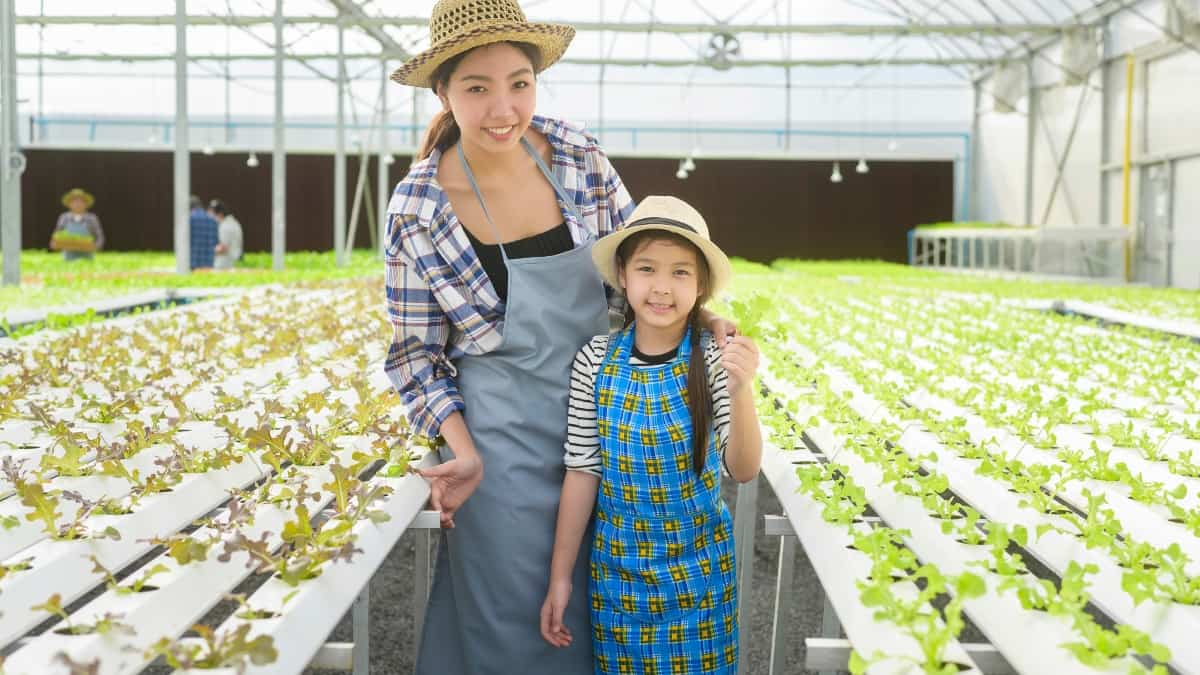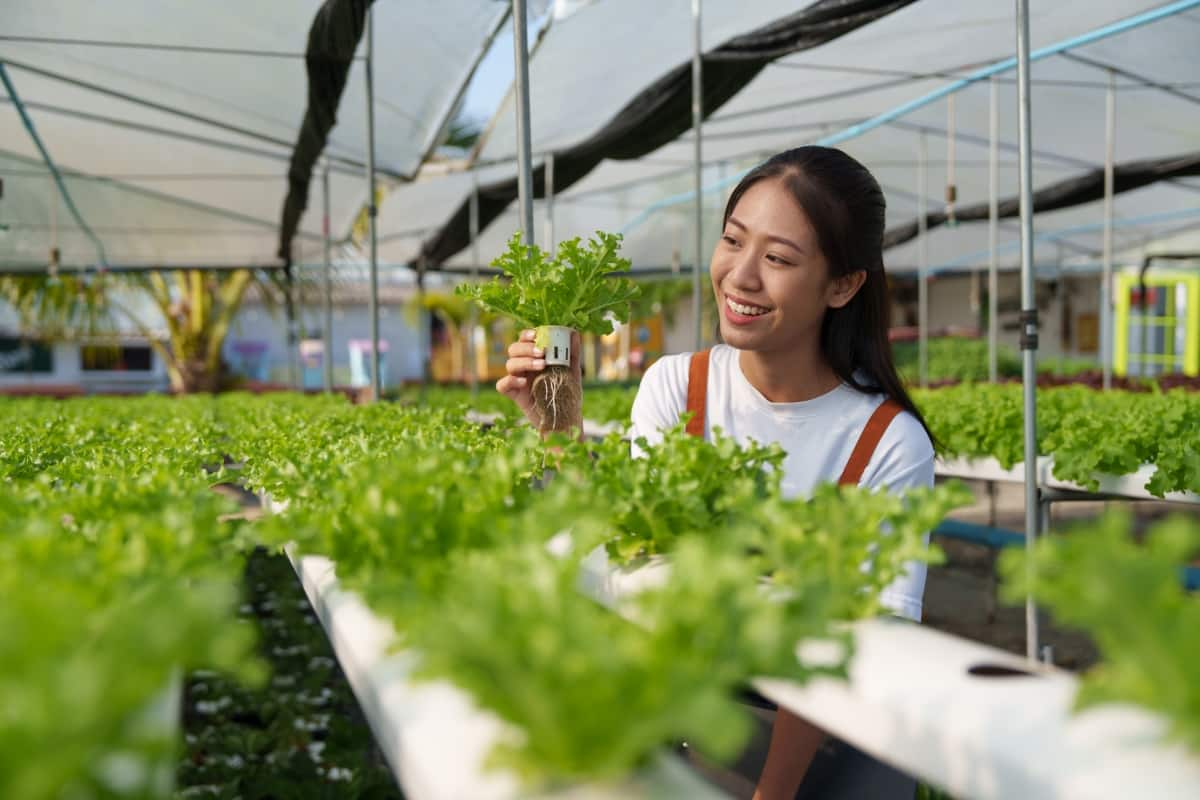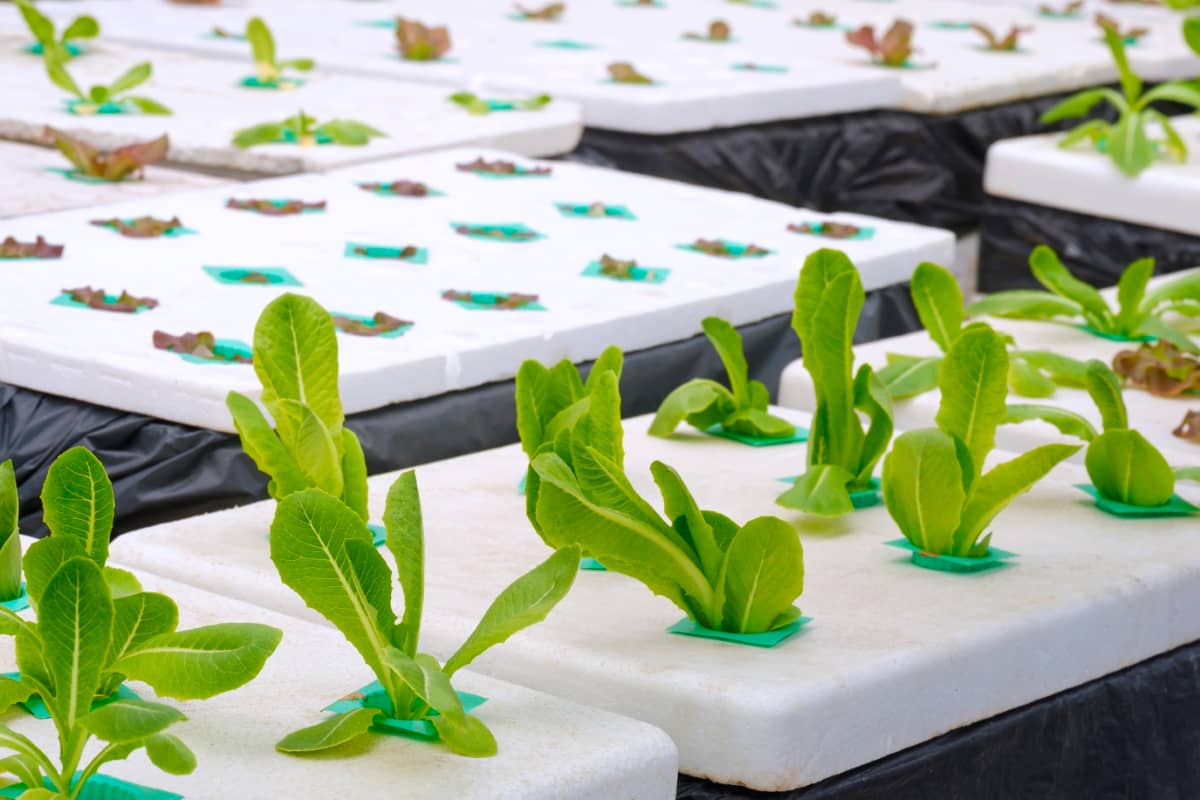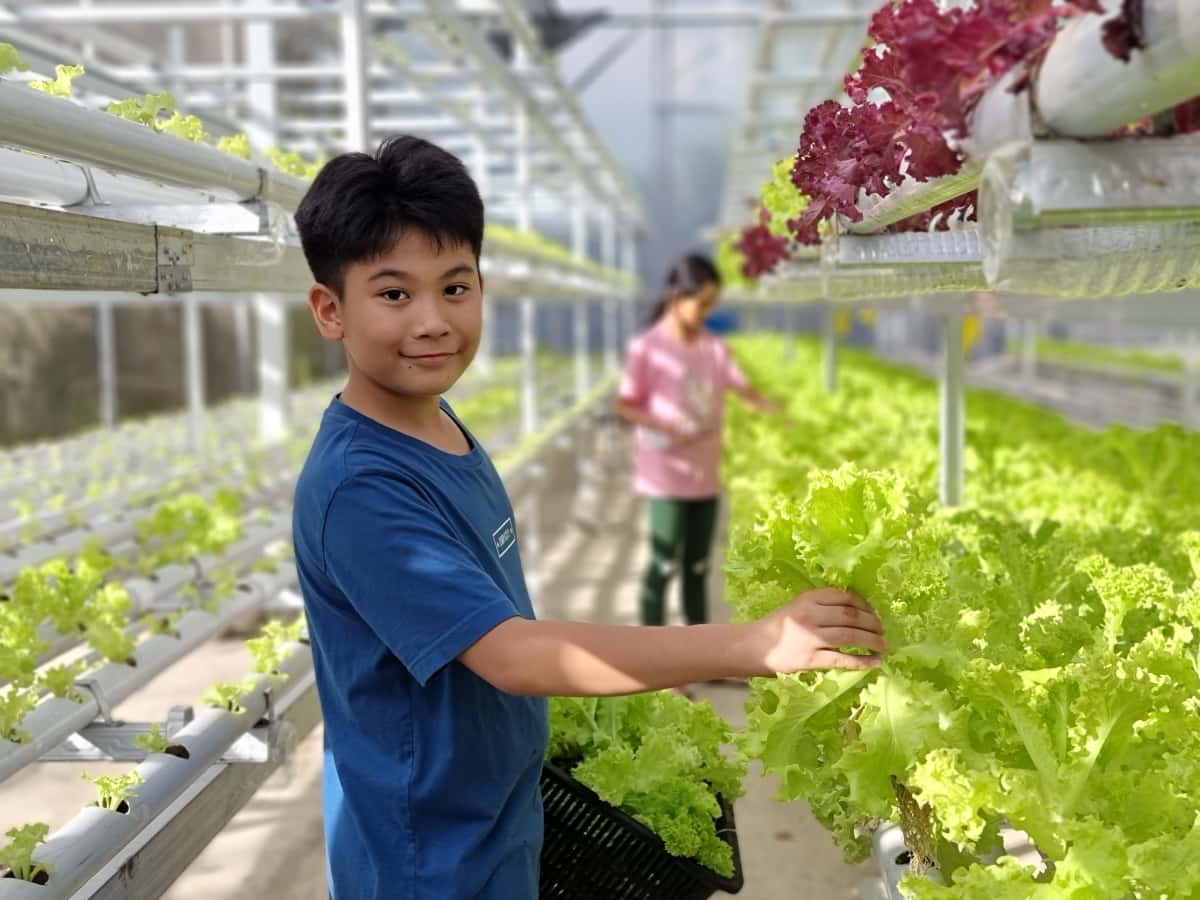Hydroponics entails cultivating plants sans soil, instead utilizing nutrient-infused water to supply vital minerals directly to their root systems. This innovative technique allows for precise control over environmental factors such as nutrient concentration, pH levels, and moisture, leading to more efficient plant growth. Hydroponics optimizes space and resources by substituting soil with an inert medium or directly immersing roots in a nutrient solution, making it an ideal approach for indoor gardening and urban farming in schools.
Benefits of Hydroponics in Education
Incorporating hydroponics into educational settings offers significant benefits, bridging theoretical knowledge with hands-on learning experiences. It introduces students to the principles of plant biology, chemistry, and environmental science in a tangible way, fostering curiosity and engagement. Hydroponics in education supports STEM learning objectives,

encouraging critical thinking, problem-solving, and understanding sustainable agricultural practices. Furthermore, it cultivates an awareness of food production challenges and solutions in urban settings, highlighting the importance of innovation in addressing global issues such as food security and environmental sustainability.
Classroom Hydroponics Program
Planning and Design
Setting Objectives
Establishing precise goals is the initial phase in implementing hydroponics in schools, be it to bolster students’ grasp of plant science, acquaint them with sustainable agriculture methods, or incorporate practical STEM education. Objectives might include demonstrating the principles of ecology, understanding hydroponics nutrient management in the classroom, or exploring the differences between aquaponics vs. hydroponics education, all of which contribute to a comprehensive educational experience.
Choosing a Hydroponic System
Several hydroponic systems are suitable for classroom use, each with its unique setup and educational value. From simple wick systems, ideal for younger students, to more complex NFT (Nutrient Film Technique) or DWC (Deep Water Culture) systems that offer deeper insights into plant science and hydroponics for teachers, the choice depends on the educational goals, available space, and the level of student engagement desired. Classroom hydroponics kits are often a good starting point, providing all the necessary components for a basic setup, and are an excellent introduction to hydroponic systems for education.
Getting Started
Budgeting
Budgeting for a classroom hydroponics program involves considering the costs of hydroponics kits, lighting, nutrients, and seeds, among other essentials. Schools can look into hydroponics funding for schools, grants, and community sponsorships to support their programs. DIY classroom hydroponics can also be a cost-effective approach, utilizing readily available materials to build simple systems, thus making hydroponics an accessible option for every school.
Gathering Resources
The resources needed for a classroom hydroponics program include growing lights, hydroponic nutrients, seeds, a water reservoir, and growth mediums. Teachers can incorporate hydroponics lesson plans that include sourcing materials, setting up the system, and ongoing maintenance as part of the educational process, fostering a sense of ownership and responsibility among the students. Engaging students in every step, from planning to execution, enhances their learning experience and understanding of sustainable farming practices.
In case you missed it: Homemade Natural Pesticides for Hydroponics: DIY Preparation Recipes

System Setup
Building or Acquiring the Hydroponic System
Setting up a hydroponic system in the classroom can be an exciting project for students, involving steps from building the structure to installing lighting and irrigation systems. Whether using a ready-made classroom hydroponics kit or embarking on a DIY project, the process provides a practical application of engineering and problem-solving skills integral to STEM education. This hands-on approach demystifies the technology behind hydroponics and encourages creativity and innovation among students.
Environmental Controls
Effective management of environmental factors such as light, temperature, and humidity is vital for the achievement of a classroom hydroponics initiative. Utilizing natural light or grow lights allows for precise control over growing conditions. Monitoring and regulating temperature and humidity levels are essential to replicate optimal conditions for plant growth, thus reinforcing scientific principles learned in the classroom regarding plant development.
Plant Selection
Choosing Plants
Selecting the right plants for a classroom hydroponics system is essential for its success. Ideal candidates include herbs, lettuce, and other leafy greens, which are relatively easy to grow and require similar conditions, making them suitable for a classroom setting. These plants also provide quick results, keeping students engaged and offering tangible outcomes for their efforts.
Seeding and Propagation
In a classroom environment, seeding and propagation provide practical learning experiences, enabling students to witness the complete plant life cycle, from seed germination to harvest. This process can be integrated into biology and environmental science curricula, providing practical applications for theoretical knowledge and fostering a deeper understanding of plant biology and the importance of sustainable agricultural practices.
Nutrient Management
Understanding Hydroponic Nutrients
Hydroponic nutrients are vital for plant development in environments without soil, supplying the required macro and micronutrients. Educating students on the role of each nutrient and how they affect plant growth introduces them to complex concepts in plant science and chemistry, making it an integral part of the hydroponics curriculum integration.
Feeding Your Plants
Teaching students how to mix and administer nutrients to their hydroponic plants is a practical chemistry and mathematics lesson involving calculations and measurements to ensure the correct nutrient balance. This hands-on approach reinforces academic concepts and teaches responsibility and the importance of precision in scientific endeavors.
Water and pH Management
Water Quality and Systems
Maintaining high water quality is paramount in hydroponics, as it directly impacts plant health. Students learn about the importance of clean water in agriculture and the potential impact of contaminants, tying into broader environmental science themes and discussions on sustainability and conservation.
pH Monitoring and Adjustment
Understanding the role of pH in plant nutrient uptake is crucial in hydroponics. Teaching students to monitor and adjust pH levels in their hydroponic systems provides a practical application of chemistry concepts, enhancing their comprehension and interest in the subject. This aspect of hydroponics education emphasizes the importance of ongoing monitoring and adjustments, mirroring the scientific process and encouraging a methodical approach to problem-solving.
Daily Operations and Maintenance
Routine Check-ups
Daily and weekly maintenance tasks are vital for the smooth operation of a classroom hydroponics system. These include checking water levels, ensuring pumps and lights function correctly, monitoring plant growth, and assessing nutrient solutions’ pH and conductivity. Weekly tasks might involve cleaning filters, checking for signs of pests or diseases, and replacing nutrient solutions to maintain optimal growing conditions.
Regular maintenance keeps the system running efficiently and provides ongoing learning opportunities for students, reinforcing the importance of consistency and attention to detail in scientific and agricultural practices.
Troubleshooting
Common issues in classroom hydroponics can range from nutrient deficiencies and imbalances to pest infestations and equipment malfunctions. Solutions might involve adjusting nutrient concentrations, implementing natural pest management strategies, or troubleshooting hardware problems. Educating students to recognize and tackle such challenges cultivates vital critical thinking and problem-solving abilities, crucial not only in STEM education but also in broader contexts.
In case you missed it: Guide to Using Sevin Insect Killer Dust in Hydroponics: When and How to Apply

Integrating into Curriculum
Lesson Plans and Activities
Integrating hydroponics into various subjects can be achieved through interdisciplinary lesson plans and activities linking hydroponics to biology, chemistry, environmental science, and economics. For example, exploring plant biology through the growth stages observed in the hydroponic system, conducting chemical experiments to understand nutrient solutions, or calculating the cost-effectiveness and environmental impact of hydroponic gardening versus traditional soil gardening. These activities provide a hands-on learning experience that can enhance students’ understanding of theoretical concepts.
Student Engagement and Responsibilities
Involving students in caring for and maintaining the hydroponic system is crucial for their engagement and learning. Assigning specific responsibilities, such as monitoring system parameters, mixing nutrients, or managing the planting and harvesting schedule, can give students a sense of ownership and pride in their work. This involvement teaches practical skills and fosters teamwork, responsibility, and an appreciation for the effort involved in producing food.
Harvesting and Beyond
Harvesting Produce
Guidelines on when and how to harvest hydroponic produce involve observing the maturity of the plants and understanding the optimal time to pick them to ensure peak freshness and nutritional value. Teaching students the signs of readiness for various crops and the proper techniques for harvesting provides a rewarding culmination of their efforts and an opportunity to celebrate their success.
Sustainability and Community Impact
Using the hydroponics program to teach broader lessons about sustainability and community involvement can extend its impact beyond the classroom. Initiatives like donating produce to local food banks, hosting community workshops on hydroponic gardening, or collaborating with local environmental groups can illustrate the practical applications of sustainable agriculture. These activities reinforce the lessons learned through the hydroponics program and demonstrate to students the potential of their efforts to contribute positively to their communities and the environment.
In case you missed it: Hydroponic Bok Choy: DIY Setup, Instructions to Grow, Exploring Water EC to pH

Conclusion
Launching a classroom hydroponics program offers a multifaceted educational experience, integrating practical skills with core academic concepts across various subjects.
- Feed Your Flock for Less: Top 10 Tips to Save on Chicken Feed
- Ultimate Guide to Ossabaw Island Hog: Breeding, Raising, Diet, and Care
- Hatching Answers: The Top 10 Reasons Your Chickens Aren’t Laying Eggs
- Eggs and Economics: Breaking Down the Cost of Raising Backyard Chickens
- Defend Your Greens: Proven Methods to Keep Iguanas Out of Your Garden
- Ultimate Guide to Cinnamon Queen Chicken: A Comprehensive Guide for Beginners
- Ultimate Guide to California Tan Chicken: Breeding, Raising, Diet, Egg-Production and Care
- Ultimate Guide to Marsh Daisy Chicken: Breeding, Raising, Diet, and Care
- 10 Types of Chicken Farming Businesses You Can Start for Profits